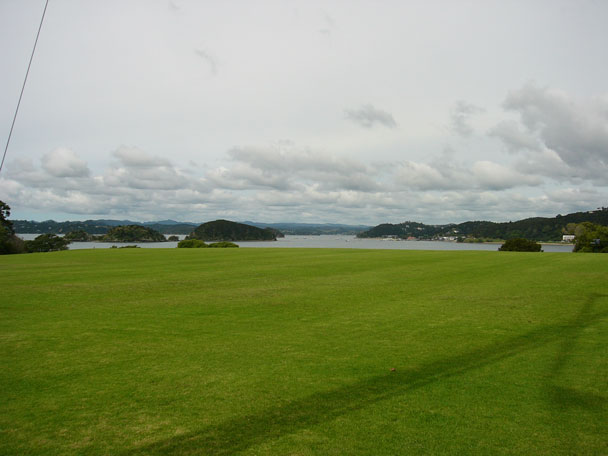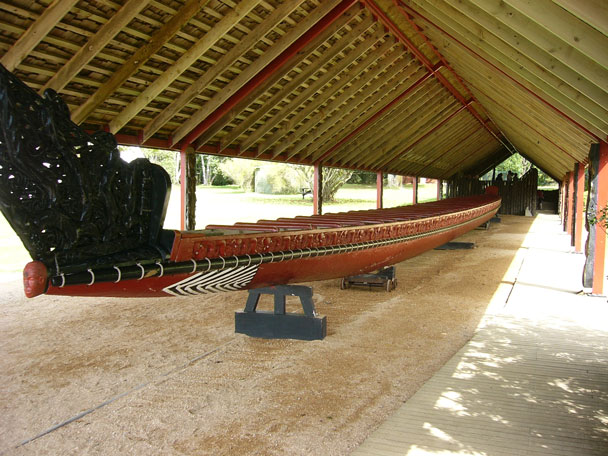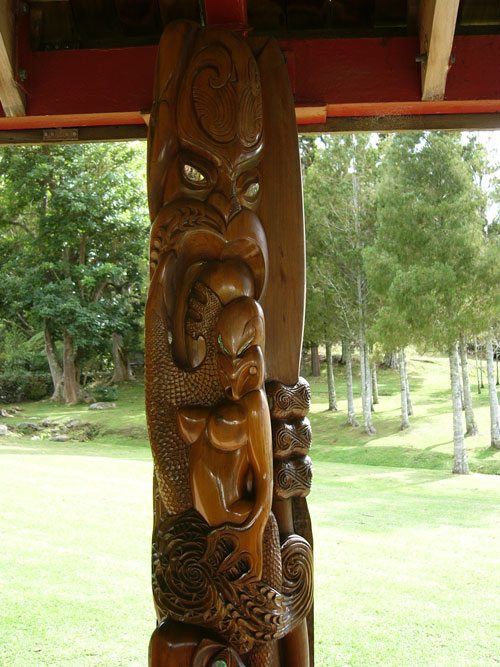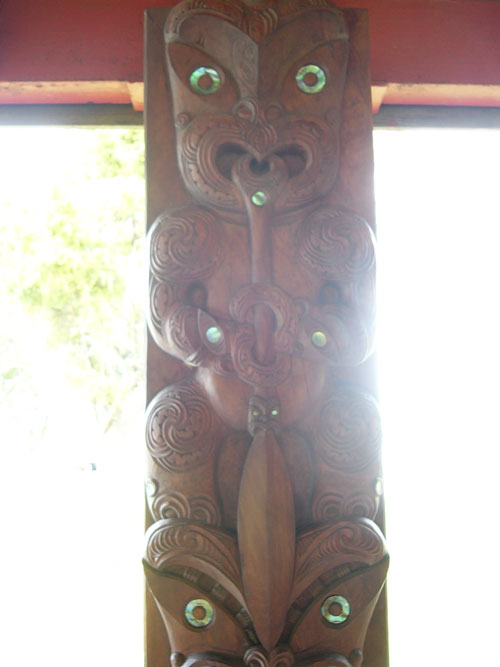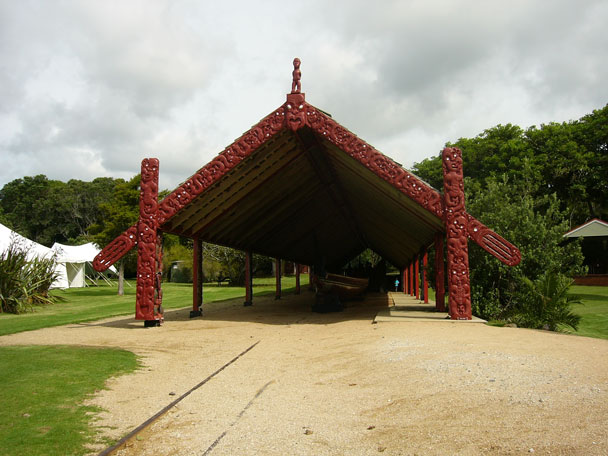| Waitangi is the site of the
1840 signing of the Treaty of Waitangi, a document that haunted Kiwis ever
since.
I'm not even going to try to explain it.
If it's described from
a Pakeha
(European) standpoint, the Maori get upset.
If it's described from a Maori standpoint, the Pakeha
get upset. |
|
Here's the Wikipedia article. |
| |
| |
|
NZ government site with more extensive
explanation: |
|
 |
| |
|
The Waitangi National Trust manages
the treaty grounds: |
|
 |
| |
| The Waitangi flagpole. |
|
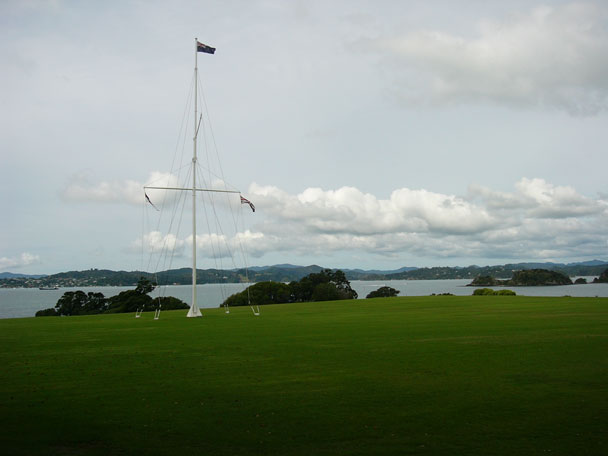 |
| |
| Flagpoles have been the
object of considerable cultural baggage in New Zealand. In
past years attempts have been made to fly the
Maori Sovereignty Flag from a nearby tree, thereby placing it above the
NZ flag. The NZ flag has been flown on this pole only since 1974.
Before then, it was the Union Jack. |
| |
| The flagpole in nearby
Russell / Kororareka was chopped down four times by 1845. After the third
time, the British started to build a base in iron, and delegated some troops
to protect it. Kawiti created a diversion down on the beach to
draw the troops away, and Hone Heke went up and chopped it down again.
|
|
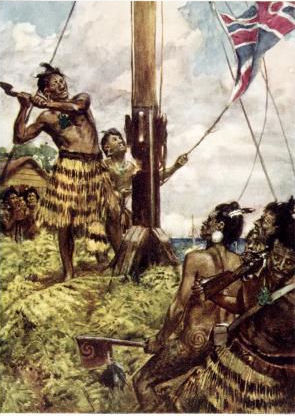 |
|
Painting by Arthur David
McCormick (1860-1943) |
|
Image Source Here |
| The locale is spectacular. |
|
|
| There is a big Waka (canoe)
at Waitangi. Exceptional woodworking. |
|
|
| |
| Some of the
carvings on the posts of the shelter. These images were
taken with the digital camera, with the crappy metering.
|
|
|
|
One Column |
|
|
| |
|
The shelter for the Waka, more
intricate carving. |
|
|
| The Meeting house at
Waitangi. The meeting house is unique in that it is not built for a
specific iwi, but contains elements common to all Maori. |
|
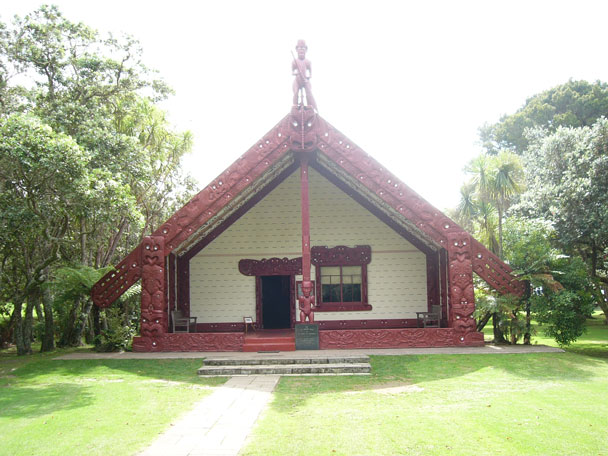 |
| |
| |









